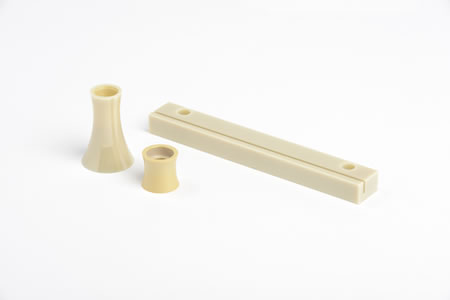The use of technical ceramics such as zirconia and alumina for die components and wear parts has increased in recent years. In the correct application, these materials work very well. Because of its relative fragility, making sure it is the appropriate material for the given application is very important. These materials work well in corrosive environments and wear applications where there is very little shock or impact involved. Additionally, proper part design is critical.
Here are some considerations:
Application Considerations
- What type of wear is this part subjected to? Ceramics do well in sliding wear applications but not in impact applications.
- Technical ceramics perform well in applications where the component comes into contact with chemicals that have a corrosive effect on tungsten carbide or hardened tool steels.
- Technical ceramics perform well in situations that take advantage of the ceramics' electrical insulating properties.
Design Considerations
- Due to its relative fragility, radii in inside corners are a must to reduce the chance of breakage.
- Threaded holes are possible in technical ceramics through the use of steel inserts that are epoxied into the ceramic part.
- Technical ceramic parts shrink significantly during the firing process so any part features that are produced prior to firing need to have a large tolerance, such as ±.050".

